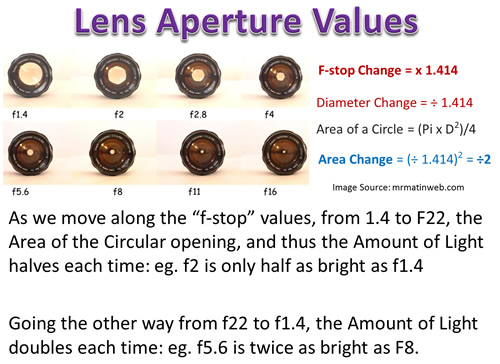- My Forums
- Tiger Rant
- LSU Recruiting
- SEC Rant
- Saints Talk
- Pelicans Talk
- More Sports Board
- Fantasy Sports
- Golf Board
- Soccer Board
- O-T Lounge
- Tech Board
- Home/Garden Board
- Outdoor Board
- Health/Fitness Board
- Movie/TV Board
- Book Board
- Music Board
- Political Talk
- Money Talk
- Fark Board
- Gaming Board
- Travel Board
- Food/Drink Board
- Ticket Exchange
- TD Help Board
Customize My Forums- View All Forums
- Show Left Links
- Topic Sort Options
- Trending Topics
- Recent Topics
- Active Topics
Started By
Message
re: Beginner Camera for Wildlife Photography
Posted on 1/16/24 at 8:13 am to bbvdd
Posted on 1/16/24 at 8:13 am to bbvdd
quote:
The camera body doesn’t matter as much as the lens.
This. The issue with wildlife photography isn't the body, but the lenses. The problem becomes light gathering ability (aperture).
Remember the exposure triangle.
Optimally, what you want for wildlife photos is as fast a shutter speeds as you can get away with. As everyone here knows, animals like to move around, a lot. Under extreme magnification, they have little motions that can cause blurriness in the exposure. That means you have to do 1 or 2 (or both) things. You have to open your aperture to it's maximum diameter (smaller numbers) and/or increase your ISO.
Remember that everything is photography is a trade-off. The lens above has what's called a variable aperture. Since aperture is a calculation between the aperture diameter and lens focal length as the focal length of the lens changes so does the aperture.
 >
> The problem with going with super high ISO's is that whenever you increase ISO, you introduce "noise" or "grain" into the photos. What is understood among most wildlife photographers, is that the images put out for public consumption are often highly cropped. So your lens will get you 65-75% of the framing you want, and you crop in the rest of the way. It's just the nature of the business. But when you crop in that far, noise that was unnoticeable at full frame, becomes much more noticeable. There are tricks in PS and other editing software to reduce noise, but it's not a cure all (and oftentimes those fixes are noticeable to those who know what they are looking for.)
To make matters worse, most (serious) wildlife photographers often stack a 1.5 or 2x teleconverter on their lens system. And guess what, that further decreases your aperture. A 2x teleconverter will double your lens' focal length, but will also decease the aperture by the same amount. That is, a f/2.8 lens becomes a f/5.6 lens. The f/5.6 lens above would become a f/11.2 lens, and unless it's SUPER bright outside, that's not a practical solution.
ETA: I forgot to mention that the rule of thumb for not needing a tripods is your shutter speed should be faster than your focal length. ie: At 200mm your shutter speed should be faster than 1/200 second (preferably 2x that fast).
FWIW, I've done a little wildlife work, but it wasn't really my bag. I know enough about it to be dangerous. I've included is exif info so you can see how each photo was composed...

200mm, ƒ/2.8, 1/1600s, ISO 200

300mm, f/6.3, 1/320 sec, ISO 640

400 mm, f/5.6, 1/500 sec, iso 250

200 mm, f/10, 1/160 sec, ISO 400
This post was edited on 1/16/24 at 8:16 am
Popular
Back to top

 0
0





